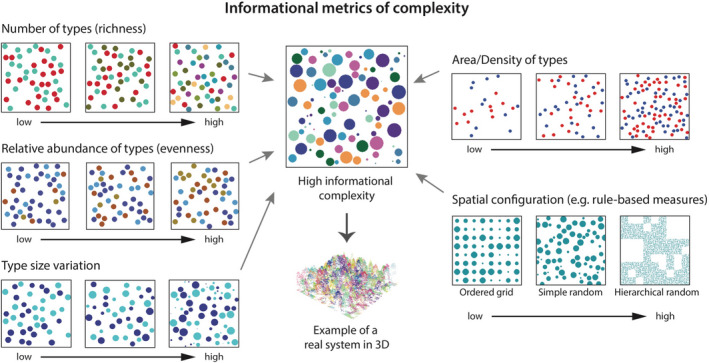FIGURE 8.

Examples of how discrete elements in a system may be altered to manipulate its informational complexity. Different types of elements are represented by circles of different colours. For instance, the spatial configuration of elements on a 2D map may be defined by some rule (e.g. ‘ordered grid’, ‘simple random’ or ‘hierarchical random’); the more ordered a system is, the lower its informational complexity as less information is required to describe it. These rules fit with intuitive notions of complexity; for example, an oil palm plantation (ordered; low density of types, number of types, and size variation) would be considered less complex than a tropical forest (random; high density of types, number of types, and size variation as depicted in the 3D example at centre‐bottom).
